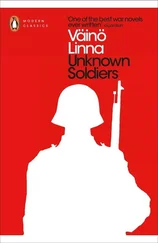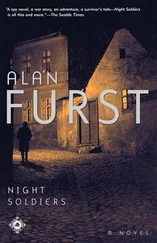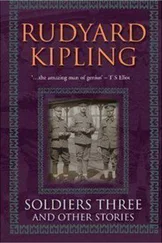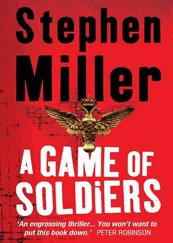Stephen Ambrose - Citizen Soldiers [Condensed]
Здесь есть возможность читать онлайн «Stephen Ambrose - Citizen Soldiers [Condensed]» весь текст электронной книги совершенно бесплатно (целиком полную версию без сокращений). В некоторых случаях можно слушать аудио, скачать через торрент в формате fb2 и присутствует краткое содержание. Жанр: История, на английском языке. Описание произведения, (предисловие) а так же отзывы посетителей доступны на портале библиотеки ЛибКат.
- Название:Citizen Soldiers [Condensed]
- Автор:
- Жанр:
- Год:неизвестен
- ISBN:нет данных
- Рейтинг книги:5 / 5. Голосов: 1
-
Избранное:Добавить в избранное
- Отзывы:
-
Ваша оценка:
- 100
- 1
- 2
- 3
- 4
- 5
Citizen Soldiers [Condensed]: краткое содержание, описание и аннотация
Предлагаем к чтению аннотацию, описание, краткое содержание или предисловие (зависит от того, что написал сам автор книги «Citizen Soldiers [Condensed]»). Если вы не нашли необходимую информацию о книге — напишите в комментариях, мы постараемся отыскать её.
Citizen Soldiers [Condensed] — читать онлайн бесплатно полную книгу (весь текст) целиком
Ниже представлен текст книги, разбитый по страницам. Система сохранения места последней прочитанной страницы, позволяет с удобством читать онлайн бесплатно книгу «Citizen Soldiers [Condensed]», без необходимости каждый раз заново искать на чём Вы остановились. Поставьте закладку, и сможете в любой момент перейти на страницу, на которой закончили чтение.
Интервал:
Закладка:
Timmermann turned to a squad leader: "Now, we're going to cross this bridge before-" At that instant there was another deafening roar. The Germans had set off a demolition two thirds of the way across the bridge. Awestruck, the men of A Company watched as the huge structure lifted up, and steel, timbers, dust, and thick black smoke mixed in the air. Many of the men threw themselves on the ground.
Ken Hechler, in The Bridge at Remagen, described what happened next: "Everybody waited for Timmermann's reaction. 'Thank God, now we won't have to cross that damned thing,' Sergeant Mike Chinchar said fervently, trying to reassure himself.
"But Timmermann, who had been trying to make out what was left of the bridge through the thick haze, yelled, 'Look-she's still standing.' Most of the smoke and dust had cleared away, and the men followed their commander's gaze. The sight of the bridge still spanning the Rhine brought no cheers. The suicide mission was on again." Timmermann could see German engineers working frantically to try again to blow the bridge. He waved his arm overhead in the "follow me" gesture. Machine-gun fire from one of the bridge towers made him duck. One of A Company's tanks pulled up to the edge of the crater and blasted the tower. The German fire let up.
Timmermann was shouting, "Get going, you guys, get going." He set the example, moving onto the bridge himself. That did it. The lead platoon followed, crouching, running in the direction of the Germans on the far shore. Sergeant Joe DeLisio led the first squad. Sergeants Joe Petrencsik and Alex Drabik led the second. In the face of more machine-gun fire, they dashed forward. "Get going," Timmermann yelled. The men took up the cry. "Get going," they shouted at one another. Engineers were right behind them, searching for demolitions and tearing out electrical wires. The names were Chinchar, Samele, Massie, Wegener, Jensen. They were Italian, Czech, Norwegian, German, Russian-children of European immigrants come back to the old country to liberate it.
On the far side, at the entrance to the tunnel, they could see a German engineer pushing on a plunger. There was nothing for it but to keep going. And nothing happened. Apparently a stray bullet or shell had cut the wire leading to the demolition charges. DeLisio got to the bridge towers, ran up the circular staircase of the one to his right, and on the fourth level found three German machine gunners firing at the bridge.
"Hande hoch!" DeLisio commanded. They gave up; he picked up the gun they had been using and hurled it out the firing window. Men on the bridge saw it and were greatly encouraged. Drabik came running at top speed. He passed the towers and got to the east bank. He was the first GI to cross the Rhine. Others were on his heels. They quickly made the German engineers in the tunnel prisoners. Timmermann sent Lieutenant Burrows and his platoon up the Erpeler Ley. Burrows took casualties, but he got to the top, where he saw far too many German men and vehicles spread out before him to even contemplate attacking them. But he had the high ground, and the Americans were over the Rhine.
Sixteen-year-old Private Heinz Schwarz, who came from a village a short distance upstream, was in the tunnel. He heard the order ring out:
"Everybody down! We're blowing the bridge!" He heard the explosion and saw the bridge rise up: "We thought it had been destroyed, and we were saved." But as the smoke cleared, he saw Timmermann and his men coming on. He ran to the entrance to the tunnel. "I knew I had to somehow get myself out through the rear entrance of the tunnel and run home to my mother as fast as I could." He did. Fifteen years later he was a member of the Bundestag, part of the federal legislature of West Germany. At a ceremony on March 7,1960, he met DeLisio, and they swapped stories.
AS THE WORD of Timmermann's toehold spread up the chain of command, each general responded by ordering men on the scene to get over the bridge, for engineers to repair it, for units in the area to change direction and head for Remagen. Bradley was the most enthusiastic of all. He had been fearful of a secondary role in the final campaign, but with Hodges over the river he decided immediately to get First Army fully involved.
Bradley got on the phone to Eisenhower. When he heard the news, Ike was ecstatic. Bradley said he wanted to push everything across he could. "Sure," Ike responded. "Get right on across with everything you've got. It's the best break we've had."
The Germans agreed with Eisenhower and Bradley that the Luden-dorff Bridge was suddenly the most critical strategic spot in Europe. So, like the Americans, they began rushing troops and vehicles to the site. For the Germans it was a hellish march through mud, traffic jams, abandoned vehicles, dead horses, dead men. Piper Cubs would spot them and bring down shelling from American artillery on the west bank.
For the Americans it was a hellish march over the bridge. Captain Roland of the 99th Division crossed on the night of March 7-8, to the "whistle and crash of hostile shells. How exposed and vulnerable I felt on that strip of metal high above the black, swirling waters. Walking forward became extremely difficult. I had the feeling that each projectile was' headed directly at my chest." Colonel William Westmoreland (USMA, 1936), chief of staff of the 9th Armoured, crossed that night lying on his belly on the hood of a jeep, spotting for holes in the planking that covered the railroad tracks. In the morning he set up an antiaircraft battery on top of the Erpeler Ley. He saw his first jet aircraft that day.
Hitler ordered courts-martial for those responsible for failing to blow the bridge. The American crossing at Remagen cost Field Marshal Rundstedt his job as commander in the West; Hitler dismissed four other generals and ordered an all out assault to destroy the bridge, including jets-plus V-2s, plus frogmen to place explosives in the pilings, plus constant artillery bombardment. The Americans hurried antiaircraft into the area. One observer of a German air strike recalled that when the planes appeared, "there was so much firing from our guys that the ground shuddered; it was awesome. The entire valley around Remagen became cloaked in smoke and dust before the Germans left-only three minutes after they first appeared."
The Americans poured in artillery, depending on Piper Cub FO's (forward observers) to direct the shells to a ripe target. Sergeant Oswald Filla, a panzer commander, recalled, "Whenever we went anywhere around the bridgehead to see what could be done, we had, at most, a half-hour before the first shells arrived."
As the infantry and armour gradually forced the Germans back, hundreds of engineers worked to repair the bridge even as it was getting pounded, while thousands of others laboured to get pontoon bridges across the river. The 291st Engineer Combat Battalion (ECB) worked with grim resolve despite air and artillery assaults. The engineers also built log and net booms upstream to intercept German explosives carried to the bridge by the current.
Major Jack Barnes (USMA, 1938) of the 51st ECB was in charge of building a 25 ton heavy pontoon bridge. His description of how it was done illustrates how good the American engineers had become at this business. Construction began at 1600 hours, March 10, with the building of approach ramps on both shores two kilometres upstream of the bridge. Smoke pots hid the engineers from German snipers, but "enemy artillery fire harassed the bridge site. Several engineers were wounded and six were killed. The Germans even fired several V-2 rockets from launchers in Holland, the only time they ever fired on German soil.
"The bridge was built in parts, with four groups working simultaneously, mostly by feel in the dark. By 0400 the next morning, fourteen 4-boat rafts had been completed and were ready to be assembled together as a bridge. When the rafts were in place they were reinforced with pneumatic floats between the steel pontoons so the bridge could take the weight of 36-ton Sherman tanks."
Читать дальшеИнтервал:
Закладка:
Похожие книги на «Citizen Soldiers [Condensed]»
Представляем Вашему вниманию похожие книги на «Citizen Soldiers [Condensed]» списком для выбора. Мы отобрали схожую по названию и смыслу литературу в надежде предоставить читателям больше вариантов отыскать новые, интересные, ещё непрочитанные произведения.
Обсуждение, отзывы о книге «Citizen Soldiers [Condensed]» и просто собственные мнения читателей. Оставьте ваши комментарии, напишите, что Вы думаете о произведении, его смысле или главных героях. Укажите что конкретно понравилось, а что нет, и почему Вы так считаете.
![Stephen Ambrose Citizen Soldiers [Condensed] обложка книги](/books/346737/stephen-ambrose-citizen-soldiers-condensed-cover.webp)








